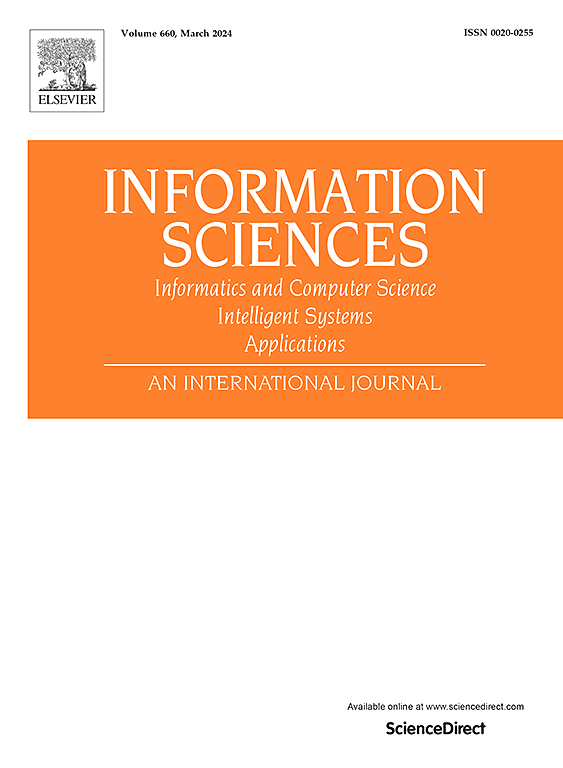基于二元单标签学习的半监督特征选择自适应结构学习
IF 6.8
1区 计算机科学
0 COMPUTER SCIENCE, INFORMATION SYSTEMS
引用次数: 0
摘要
学习未标记样本的伪标签为半监督特征选择(SSFS)提供了更多有用的信息,并且大多数现有的SSFS方法将未标记样本的标签作为连续值学习。而标记样本的给定标签以单热编码方式编码,两者在形式上不统一,不能提供更明确的监督信息。因此,本文引入二元单标签学习,将未标记的样本标签学习成统一的单热编码形式。此外,本文将改进的基于欧几里得距离的自适应图学习与稀疏表示学习相结合,保留了数据的局部和全局结构。提出了一种新的基于二元单标签学习的半监督特征选择自适应结构学习(ASBLFS)模型,并推导了一种高效的优化算法。最后,通过在15个基准数据集上使用几种先进的SSFS模型进行大量实验,得出以下结论:(1)在某些数据集上,二元单标签的性能优于连续标签,表明二元标签可以提供更明确的监管信息。(2) ASBLFS在大多数数据集上表现为次优或最佳性能,说明了ASBLFS的优越性。本文章由计算机程序翻译,如有差异,请以英文原文为准。
Adaptive structure learning for semi-supervised feature selection with binary single-label learning
Learning pseudo-labels for unlabeled samples provides more helpful information in semi-supervised feature selection (SSFS), and the labels of unlabeled samples are learned as continuous values by most existing SSFS methods. Whereas the given labels of labeled samples are encoded in a one-hot encoding way, the two are not uniform in form and do not provide more explicit supervised information. So, this paper introduces binary single-label learning, which learns unlabeled sample labels into a uniform one-hot encoding form. Furthermore, this paper preserves the data's local and global structure by combining improved Euclidean distance-based adaptive graph learning with sparse representation learning. A novel SSFS model called Adaptive Structure Learning for Semi-supervised Feature Selection with Binary Single-label Learning (ASBLFS) is proposed, and an efficient optimization algorithm is derived. Finally, the following conclusions are observed through extensive experiments with several advanced SSFS models on 15 benchmark datasets: (1) Binary single labels achieve better performance than continuous labels on some datasets, suggesting that binary labels can provide more explicit supervisory information. (2) ASBLFS shows the second-best or best performance on most datasets, demonstrating the superiority of ASBLFS.
求助全文
通过发布文献求助,成功后即可免费获取论文全文。
去求助
来源期刊

Information Sciences
工程技术-计算机:信息系统
CiteScore
14.00
自引率
17.30%
发文量
1322
审稿时长
10.4 months
期刊介绍:
Informatics and Computer Science Intelligent Systems Applications is an esteemed international journal that focuses on publishing original and creative research findings in the field of information sciences. We also feature a limited number of timely tutorial and surveying contributions.
Our journal aims to cater to a diverse audience, including researchers, developers, managers, strategic planners, graduate students, and anyone interested in staying up-to-date with cutting-edge research in information science, knowledge engineering, and intelligent systems. While readers are expected to share a common interest in information science, they come from varying backgrounds such as engineering, mathematics, statistics, physics, computer science, cell biology, molecular biology, management science, cognitive science, neurobiology, behavioral sciences, and biochemistry.
 求助内容:
求助内容: 应助结果提醒方式:
应助结果提醒方式:


